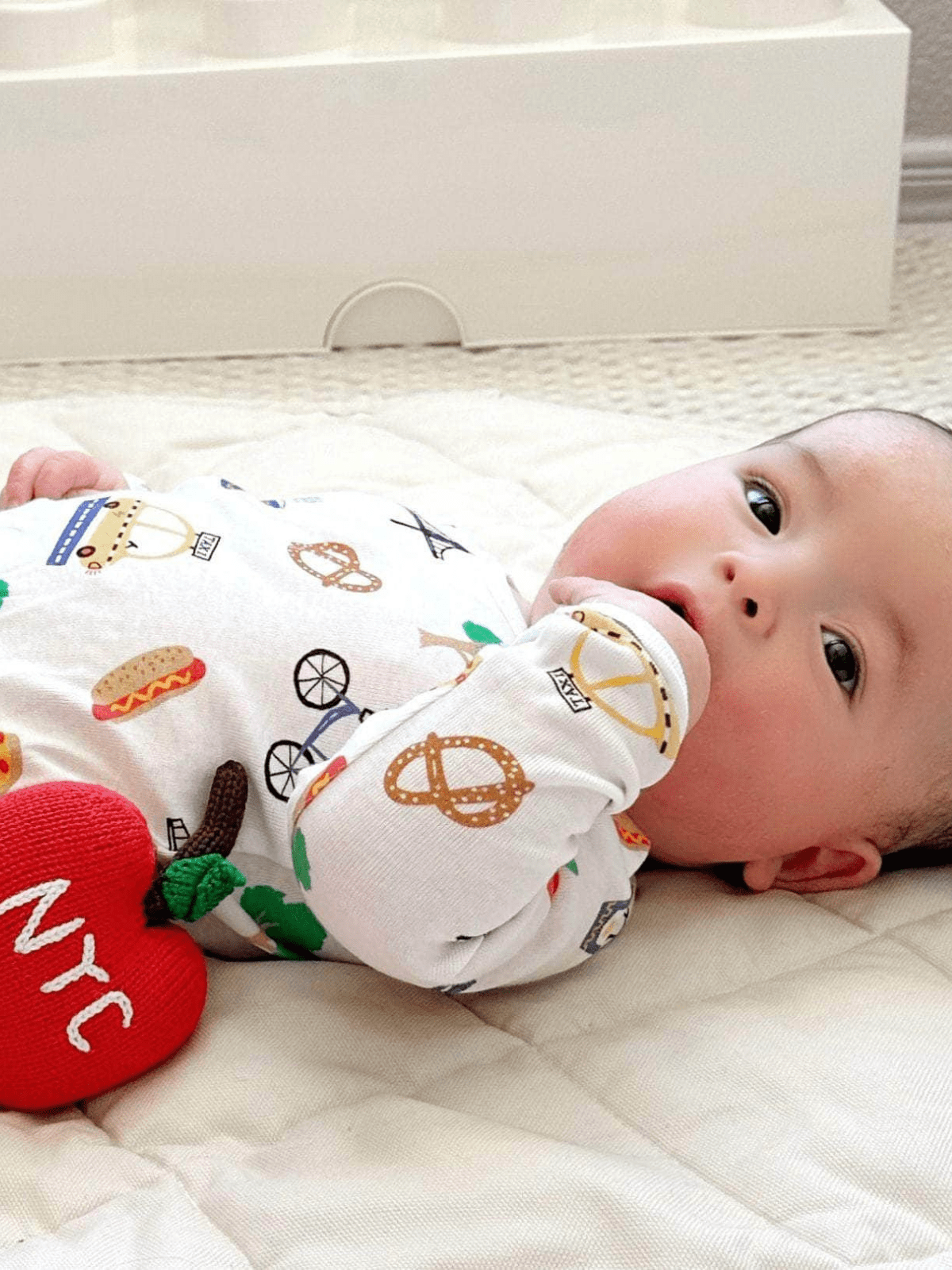As a first-time mother-to-be, the thought of sleep training your baby might feel daunting. The idea of your little one struggling to sleep can be stressful, and you're probably eager to find the best approach to ensure they develop healthy sleep habits. Sleep training, when done correctly, can be a smooth process that benefits both you and your baby. However, there are several common mistakes that parents often make. Understanding and avoiding these pitfalls can make the journey much easier.
1. Inconsistency in Routine
Consistency is key when it comes to sleep training. Many new parents struggle with maintaining a regular bedtime routine, which can confuse the baby and disrupt their sleep patterns. The American Academy of Pediatrics (AAP) emphasizes that a consistent bedtime routine helps children understand when it's time to sleep, which significantly improves their sleep quality.
Solution: As you prepare for your baby's arrival, plan a simple, calming bedtime routine. This can include a warm bath, a gentle massage, reading a story, or quiet playtime. Stick to this routine every night to signal to your baby that it's time to wind down.
2. Responding to Every Cry Immediately
It's natural to want to comfort your baby at the first sound of a cry, but doing so can interfere with their ability to learn self-soothing skills. Research from the AAP indicates that allowing brief periods for babies to self-soothe before intervening can help them develop independence and better sleep habits.
Solution: Plan to wait a few minutes before responding to your baby’s cries. This will give them the opportunity to try self-soothing first. Gradually increase the waiting time as your baby becomes more accustomed to this approach.
3. Overstimulating Before Bedtime
Stimulating activities close to bedtime can make it difficult for your baby to settle down and fall asleep. Activities that are too exciting can elevate your baby’s adrenaline levels, making sleep more challenging to achieve.
Solution: Introduce calming activities at least an hour before bedtime. Soft music, gentle rocking, or reading a quiet story can help signal to your baby that it's time to relax.
4. Ignoring Sleep Cues
Missing your baby’s sleep cues can lead to overtiredness, making it harder for them to fall asleep and stay asleep. Babies often show signs of tiredness like rubbing their eyes, yawning, or becoming fussy.
Solution: Pay close attention to your baby’s sleep cues and respond promptly by beginning the bedtime routine. This helps prevent overtiredness and makes it easier for your baby to fall asleep quickly.
5. Inconsistent Sleep Environment
A sleep environment that changes frequently can confuse your baby and disrupt their sleep. The AAP emphasizes the importance of a consistent and safe sleep environment to reduce the risk of sudden infant death syndrome (SIDS) and other sleep-related issues.
Solution: Ensure your baby’s sleep environment is consistent and conducive to sleep. This includes using a firm mattress, keeping the room at a comfortable temperature, and minimizing noise and light.
6. Feeding to Sleep
Feeding your baby right before putting them to bed can create a sleep association that may lead to frequent night wakings. While feeding can be a part of the bedtime routine, it should not be the final step before sleep.
Solution: Separate feeding from the final steps of the bedtime routine. After feeding, engage in another calming activity, like reading a book, before putting your baby down to sleep.
7. Lack of Patience and Persistence
Sleep training requires time, patience, and persistence. Many parents give up too soon if they don’t see immediate results, but consistency over time is key to success.
Solution: Set realistic expectations and be prepared for setbacks. Stick with your chosen sleep training method consistently for several weeks to give it a fair chance to work.
8. Using Sleep Aids Ineffectively
While sleep aids like pacifiers or white noise machines can be helpful, relying on them too heavily can backfire. It's important to use these aids correctly to avoid dependency.
Solution: Use sleep aids as a part of the bedtime routine, but gradually wean your baby off them as they learn to fall asleep independently. For example, reduce the volume of the white noise machine over time or limit the use of a pacifier.
9. Bed-Sharing
The AAP strongly advises against bed-sharing due to the increased risk of SIDS and accidental suffocation. Even with the best intentions, bed-sharing can be dangerous for infants.
Solution: Place your baby to sleep in a crib or bassinet in your room. This practice, known as room-sharing, can be a safer alternative while still keeping your baby close.
10. Not Adjusting for Developmental Changes
As babies grow, their sleep needs and patterns change. What works for a newborn might not be suitable for an older infant.
Solution: Be flexible and adjust your sleep training approach as your baby develops. For instance, older infants might benefit from a longer awake time before naps or a slightly later bedtime.
Expert Insights
In addition to guidelines from the AAP, experts like those at Cuddlina emphasize the importance of understanding each baby’s unique needs and adjusting strategies accordingly. Cuddlina advocates for a compassionate approach to sleep training that balances the needs of both the baby and the parents.
Offer for Consultation: For personalized guidance and support, consider consulting with sleep training experts like those at Cuddlina. They offer tailored advice to help you navigate sleep training challenges effectively and compassionately.
By avoiding these common mistakes and implementing effective sleep training strategies, you can help your baby develop healthy sleep habits that benefit the entire family. As a first-time mother, it’s natural to feel apprehensive about sleep training, but with patience, consistency, and the right approach, you can ensure that your baby learns to sleep well, providing much-needed rest for both you and your baby.
By following these steps and remaining patient and consistent, you can successfully navigate the challenges of sleep training and ensure better sleep for both you and your baby.
References:
- American Academy of Pediatrics. (2022). Safe Sleep Guidelines.
- University of Virginia, Dr. Rachel Moon’s Study on Infant Sleep.
- Cuddlina. Expert Advice on Sleep Training.









Leave a comment
This site is protected by hCaptcha and the hCaptcha Privacy Policy and Terms of Service apply.